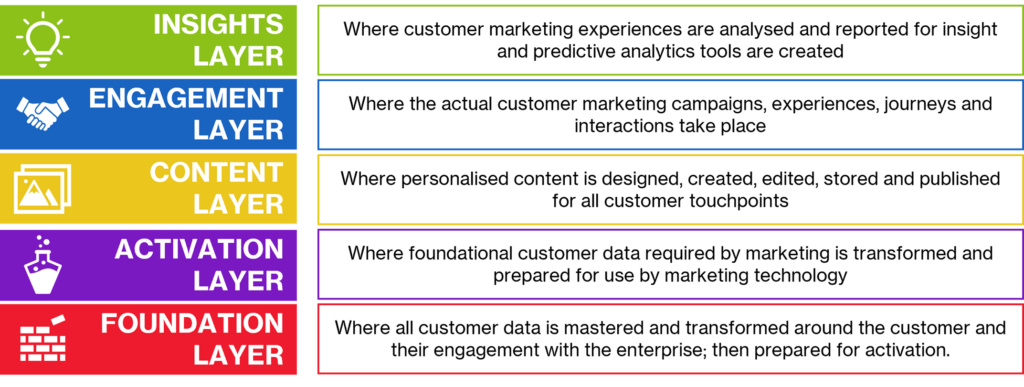How a CDP can transform your customer experience architecture

This is the first post from our new series on Customer Data Platforms (CDPs). From debunking common misconceptions to exploring the power of combining CDPs with other cutting-edge technologies, we’ll be diving deep into all things CDP – and showing you how to make the most of this game-changing technology. If you’d like to read all the blogs right away, you can register here to access the complete series.
What is a customer experience architecture?
If you’re in the world of marketing, you’ve probably heard of CDPs. But what exactly are they, and how do they fit into a modern marketing architecture?
Marketers can find CDP vendor websites confusing due to their use of language that may make CDPs sound like other components in your architecture. For example, they may claim that CDPs bring together all your customer data in one place (like an SCV) or can deliver highly personalised customer experiences (similar to other marketing platforms). However, despite this confusion, CDPs play a critical role in modern technology stacks. In this blog post, we will provide a fresh perspective on the topic to help explain the role of the CDP and its place in modern marketing architecture.
Where do CDPs fit into modern marketing architecture?
At CACI, we view modern marketing architecture as a framework with five layers:

For many vendors, CDPs typically belong in the activation layer of this framework. It takes data from the foundation layer and then feeds marketing technology in the engagement layer with data in the format that marketers need to deliver highly personalised experiences.
Some CDPs may, however, offer more foundational layer capabilities whilst others can be more engagement focused. For simplicity, our framework defines the primary purpose of the CDP is to activate marketing data, which is why we put it at the heart of the activation layer.
How can a CDP enhance your customer experience architecture?
It’s important to note that a CDP should be thought of as marketing technology, rather than data technology. Its role is to empower marketers with data, removing their reliance on data engineering and allowing them to focus on strategy and campaign execution. A CDP brings a lot to the party, providing marketers with the tools they need to create effective campaigns and drive business results, such as:
- A CDP can natively capture digital data, making it easier for marketers to activate audiences across a variety of MarTech and AdTech channels in real-time.
- By enabling the delivery of highly personalised experiences across channels, a well-implemented CDP can help businesses improve customer engagement and increase conversions.
How can CACI help?
As subject matter experts at CACI, we can tell you that a well-implemented CDP can be a game-changer for businesses of all sizes and we have hands on experience with many brands including ASOS, Kingfisher, L&G, PlayStation, Telegraph, EasyJet and DFS. If you’re interested in learning more about CDPs and how they can help your business, please don’t hesitate to reach out to one of our experts.
In our next post, we’ll explain why businesses should not choose between a CDP and a Single Customer View (SCV). If you can’t wait until then, you can register here to download the whitepaper which contains the full blog series.
Interested in learning more about how CDP an support your customer strategy? Contact us to speak to one of our experts today.
Continue reading:
Blog 2 – CDP vs. SCV: why choosing between the two is a big mistake
Blog 3 – CDP+CEP: A perfect pair for a seamless customer experience
Blog 4 – How to avoid pitfalls & drive results in CDP implementation
Blog 5 – Using CDP to design a successful business operating model